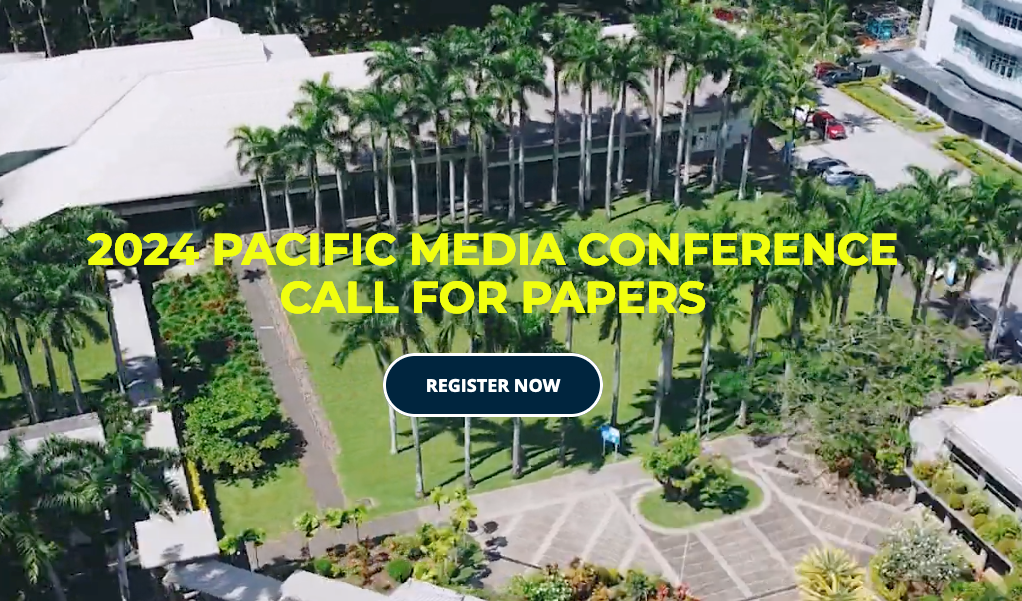Public actors in new spaces: A case study of digital Malaysia in transnational public deliberation
Abstract
This article examines the role of new transnational public actors and their influence on public deliberation processes in Malaysia. Malaysia is one of the world’s most social media-connected countries where online platforms greatly influence the Malaysian public sphere. Our study suggests considering digital news portals as specific ‘public actors’ since they enable new political debates in an otherwise fragile national public sphere. While national media are controlled by the state, digital news portals offer not only an alternative news perspective but are a stage for a diversity of voices. Furthermore, they link the Malaysian civic discourse to transnational political debates, such as human rights and ethnic interests. Results from eight in-depth semi-structured interviews with news journalists and editors of traditional media and independent digital news portals provide insights into their perceptions concerning the implications of digital news portals for new aspects of public discourse in Malaysia.
Downloads
Metrics
References
Abadi, A.M. (2015). Between ASEAN demos and ASEAN kratos: The genesis of ASEAN public spheres. Jebat: Malaysian Journal of History, Politics & Strategy, 42(2), 1-22.
Abbott, J. (2011). Cacophony or empowerment? Analysing the impact of new information communication technologies and new social media in Southeast Asia. Journal of Current Southeast Asian Affairs, 30(4), 3–31. DOI: https://doi.org/10.1177/186810341103000401
Abd Malek, M. K. M. (2018). Colonialism and the dialectics of Islamic reform in a Malay state: Pengasoh and the making of a Muslim public sphere in Kelantan, 1915-1925. University of Cambridge.
Alvarez, S. E. (2014). Beyond civil society: reflections from the feminist field. Cadernos Pagu, 43, 13-56. DOI: https://doi.org/10.1590/0104-8333201400430013
Arugay, A. A. (2019). Fall from grace, descent from power? Civil society after Philippine democracy’s lost decade. In I. Deinla and B. Dressel (Eds.), From Aquino II to Duterte (2010-2018): Change, continuity, and rupture (pp. 285-308). ISEAS–Yusof Ishak Institute. DOI: https://doi.org/10.1355/9789814843294-016
ASEAN. (2017, August 6). ASEAN statistical report on millennium development goals 2017. http://www.aseanstats.org/wp-content/uploads/2017/08/ASEAN_MDG_2017.pdf
Bennett, L. (2013). The logic of connective action: digital media and the personalization of contentious politics. Cambridge University Press. DOI: https://doi.org/10.1017/CBO9781139198752
Chaudhury, S. (2021). Dispossession, un-freedom, precarity: Negotiating citizenship laws in postcolonial South Asia. The South Atlantic Quarterly, 120(1), 209-219. DOI: https://doi.org/10.1215/00382876-8795866
Chinnasamy, S. (2013). A study of the impact of the internet, Malaysiakini.com and democratizing forces on the Malaysian general election. The University of Adelaide, Australia.
Chinnasamy, S. (2017). New media political participation and engagement in Malaysia. Routledge. DOI: https://doi.org/10.4324/9781315628998
Chinnasamy, S. (2018, February 28). A Facebook election. New Straits Times. https://www.nst.com.my/opinion/columnists/2018/02/339743/facebook-election-year.
Chinnasamy, S., & Anida, M. T. (2019). New media and social influencer engagement on lifestyle and political content. International Journal of Recent Technology and Engineering (IJRTE), 8(3), 3526-3541. DOI: https://doi.org/10.35940/ijrte.C5274.098319
Chinnasamy, S., & Manaf, N.F. (2018). Social media as political hatred mode in Malaysia’s 2018 general election. SHS Web of Conferences, 53, 02005. https://pdfs.semanticscholar.org/1fa8/acc5700eaf5d739b8664a0354273b1f8904f.pdf?_ga=2.261097679.318882825.1660265931-389994173.1660265931 DOI: https://doi.org/10.1051/shsconf/20185302005
Croucher, S. M., & Cronn-Mills, D. (2015). Understanding communication research methods. Routledge. DOI: https://doi.org/10.4324/9780203495735
Digital in Asia. (2018, October 17). Latest digital in 2018 global report. https://digitalinasia.com/2018/01/31/latest-digital-in-2018-global-report.
Dirlik, A. (2012). Colonialism, revolution, development a historical perspective on citizenship in political struggles in Eastern Asia. In C. Kyung-Soup & B. Turner (Eds.), Contested citizenship in East Asia (pp. 43-61). Routledge.
Douglas, M. (2008). Civil society for itself and in the public sphere: Comparative research on globalization, cities, and civic space in Pacific Asia. In M. Douglass, K. C. Ho, & G. L. Ooi (Eds.), Globalization, the city, and civil society in Pacific Asia: The social production of civic spaces (pp. 27–49). Routledge. DOI: https://doi.org/10.4324/9780203939383
Fink, C. (2018). Dangerous speech, anti-Muslim violence, and Facebook in Myanmar. Journal of International Affairs, 71(1.5), 43-52.
Fraser, N. (2007a). Identity, exclusion, and critique: A response to four critics. European Journal of Political Theory, 6(3), 305–338. DOI: https://doi.org/10.1177/1474885107077319
Fraser, N. (2007b). Transnationalizing the Public Sphere. Theory, Culture & Society, 24(7), 7–30. DOI: https://doi.org/10.1177/0263276407080090
Frère, M., & Kyindou, A. (2009). Democratic process, civic consciousness and the internet in Francophone Africa. In O.F. Mudhai, W. Tettey and F. Banda (Eds.), African media and the digital public sphere (pp. 73–88). Palgrave Macmillan. DOI: https://doi.org/10.1057/9780230621756_5
Gilson, J. (2013). Communicating practice in transnational advocacy: Examples from Southeast Asia. Globalizations, 10, 571-585. DOI: https://doi.org/10.1080/14747731.2013.806742
Habermas, J. (1999). Between facts and norms. Contributions to a discourse theory of law and democracy. The MIT Press.
Miles, M.B., & Huberman, A.M. (1984). Qualitative data analysis: A sourcebook of new methods. Sage Publications.
Jayal, N. (2013). Citizenship and its discontents. Harvard University Press. DOI: https://doi.org/10.4159/harvard.9780674067585
Koo, J.W. (2007). The origins of the public sphere and civil society. Social Science History, 31(3), 381- 409. DOI: https://doi.org/10.1017/S0145553200013791
Leong, C. (2020). Digital organising of a global social movement: From connective to collective action. Information and Organization, 30(4), 280-281. DOI: https://doi.org/10.1016/j.infoandorg.2020.100324
Leong, P. P. Y. (2015). Political communication in Malaysia: A study on the use of new media in politics. JeDEM—EJournal of EDemocracy and Open Government, 7(1), 46-71. DOI: https://doi.org/10.29379/jedem.v7i1.372
Lim, M. (2017). Freedom to hate social media, algorithmic enclaves, and the rise of tribal nationalism in Indonesia. Critical Asian Studies, 49(3), 411-427. DOI: https://doi.org/10.1080/14672715.2017.1341188
Luckmann, T. (1996). The social construction of reality: A treatise in the sociology of knowledge. Anchor Books.
MCMC. (2018, January 25). Internet users survey 2017. Malaysia. http://www.mcmc.gov.my/skmmgovmy/media/General/pdf/MCMC-Internet-Users-Survey-2017.pdf.
Miles, M.B., & Huberman, A.M. (1984a). Qualitative data analysis: A sourcebook of new methods. Sage Publications.
Miles, M. B., & Huberman, A. M. (1984b). Drawing valid meaning from qualitative data: Toward a shared craft. Educational Researcher, 13, 20-30. DOI: https://doi.org/10.3102/0013189X013005020
Milosevic, T. (2017). Blurring the lines: Market-driven and democracy-driven freedom of expression. Nordic Journal of Human Rights, 35(2), 167-169. DOI: https://doi.org/10.1080/18918131.2017.1318630
Nain, Z., & Kim, W.L. (2004). Ownership, control, and the Malaysian media. Southbound.
Neuman, W. L. (2014). Social research methods: Qualitative and quantitative approaches. Pearson Education.
Nielsen. (2019, October 16). Insight understanding Malaysia's Gen Z…and how to reach them (cited in The ASEAN Post Team, Are Malaysian teens aware of fake news? The ASEAN Post, 2021. https://theaseanpost.com/article/are-malaysian-teens-aware-fake-news
Osman, M. (2017). Understanding Islamophobia in Asia: The cases of Myanmar and Malaysia. Islamophobia Studies, 4(1), 18–35.
Patton, M. Q. (1990). Qualitative evaluation and research methods. Sage Publications.
Postill, J. (2008). Localizing the internet beyond communities and networks. New Media & Society, 10, 413–431. DOI: https://doi.org/10.1177/1461444808089416
Salahudin, A.N., Hasse, J., Zuly, Q. J., & Paryanto. (2020). Islamic political polarization on social media during the 2019 presidential election in Indonesia. Asian Affairs, 51(3), 656-671. DOI: https://doi.org/10.1080/03068374.2020.1812929
Saud, M., & Margono, H. (2021). Indonesia’s rise in digital democracy and youth’s political participation. Journal of Information Technology & Politics. 18. 1-12. DOI: https://doi.org/10.1080/19331681.2021.1900019
Saud, M., Ida, R., Abbas, A., Ashfaq, A., & Ahmad, A. (2020). The social media and digitalization of political participation in youths: An Indonesian perspective. Society, 8(1), 83-93. DOI: https://doi.org/10.33019/society.v8i1.160
Saunders, B., Sim, J., & Kingstone, T. (2018). Saturation in qualitative research: Exploring its conceptualization and operationalization. Quality & Quantity, 52, 1893–1907. DOI: https://doi.org/10.1007/s11135-017-0574-8
Shah, M.H. (2007). Historicising rationality: The transmission of rationality and science to the Malay states under British rule. Asian Journal of Social Science, 35, 216-241. DOI: https://doi.org/10.1163/156853107X203441
Sinpeng, A., & Tapsell, R. (2020). From grassroots activism to disinformation: Social media in Southeast Asia. Iseas-Yusof Ishak Institute. DOI: https://doi.org/10.1355/9789814951036
Sombatpoonsiri, J. (2018). Manipulation des zivilgesellschaftlichen Raums: Cybertrolle in Thailand und den Philippinen. German Institute for Global and Area Studies.
Steiner, Kerstin. (2018). Malaysia at the crossroads? The never-ending discourse between Islam, law and politics, Journal of Religious and Political Practice, 4(3), 256-277. DOI: https://doi.org/10.1080/20566093.2018.1525896
Tapsell, R. (2018). The smartphone as the ‘weapon of the weak’: Assessing the role of communication technologies in Malaysia’s regime change. Journal of Current Southeast Asian Affairs, 37(3), 9-29. DOI: https://doi.org/10.1177/186810341803700302
Tapsell, R. (2021). Social media and elections in Southeast Asia: The emergence of subversive underground campaigning. Asian Studies Review, 26(2), 117-134. DOI: https://doi.org/10.1080/10357823.2020.1841093
The-Titsar, M. (2021). Empowering or endangering minorities? Facebook, language, and identity in Myanmar. Asian Ethnicity, 1-23. https://doi.org/10.1080/14631369.2021.1951596 DOI: https://doi.org/10.1080/14631369.2021.1951596
Thompson, M. R. (1993). The limits of democratisation in ASEAN. Third World Quarterly, 14(3), 469–484. http://www.jstor.org/stable/3992482 DOI: https://doi.org/10.1080/01436599308420338
Volkmer, I. (2014). The global public sphere: Public communication in the age of reflective interdependence. Polity.
Wang R., Zhou A. (2021). Hashtag activism and connective action: A case study of #HongKongPoliceBrutality. Telematics and Informatics, 61, 101600. DOI: https://doi.org/10.1016/j.tele.2021.101600
Weiss, M. (2013). Parsing the power of ‘new media’ in Malaysia. Journal of Contemporary Asia, 43(4), 591–612. DOI: https://doi.org/10.1080/00472336.2012.759332
Yue, A., Nekmat, E., & Beta, A.R. (2019). Digital literacy through digital citizenship: Online civic participation and public opinion evaluation of youth minorities in Southeast Asia. Media and Communication, 7(2), 100-124. DOI: https://doi.org/10.17645/mac.v7i2.1899
Yusop, F., & Sumari, M. (2013). The use of social media technologies among Malaysian youth. Procedia—Social and Behavioral Sciences, 103, 1204-1209. DOI: https://doi.org/10.1016/j.sbspro.2013.10.448

Copyright (c) 2023 Sara Chinnasamy, Ingrid Volkmer

This work is licensed under a Creative Commons Attribution-NonCommercial 4.0 International License.
10.1177/14648849241269271















